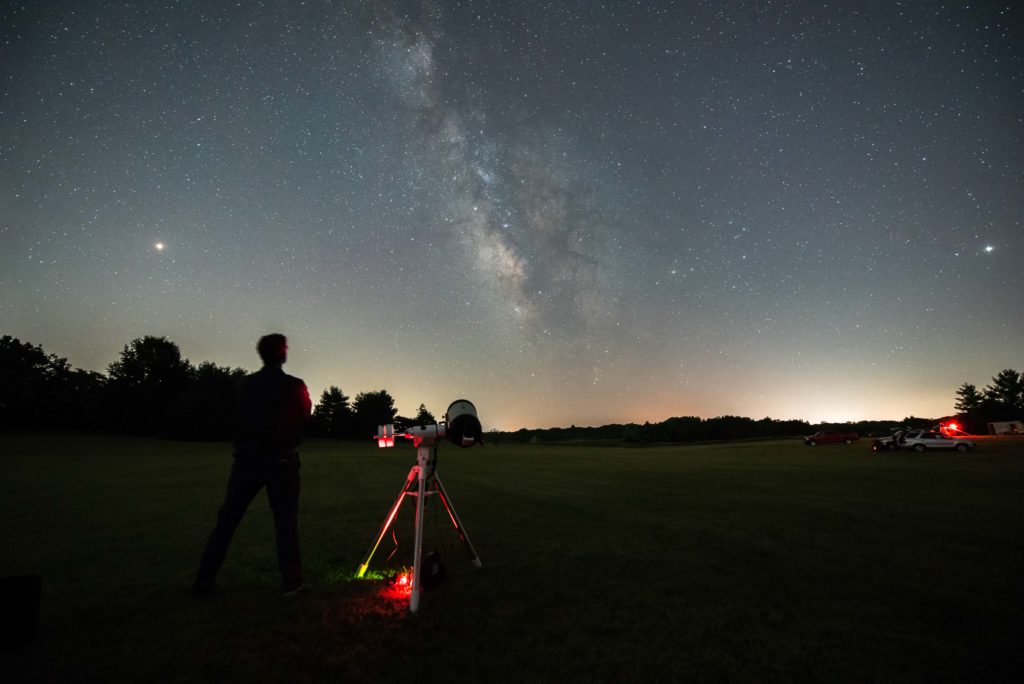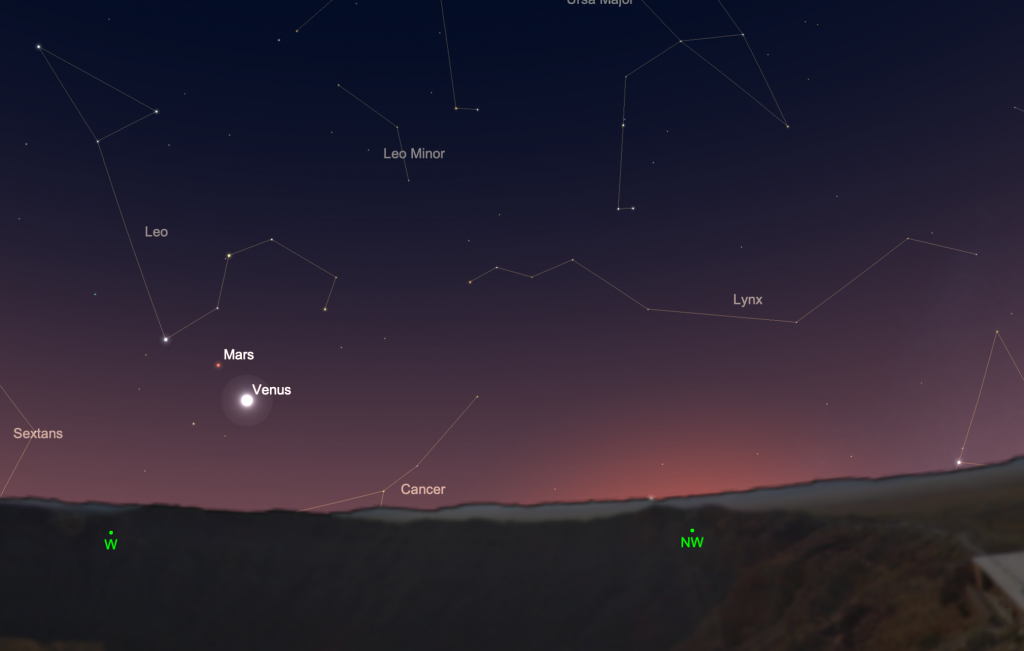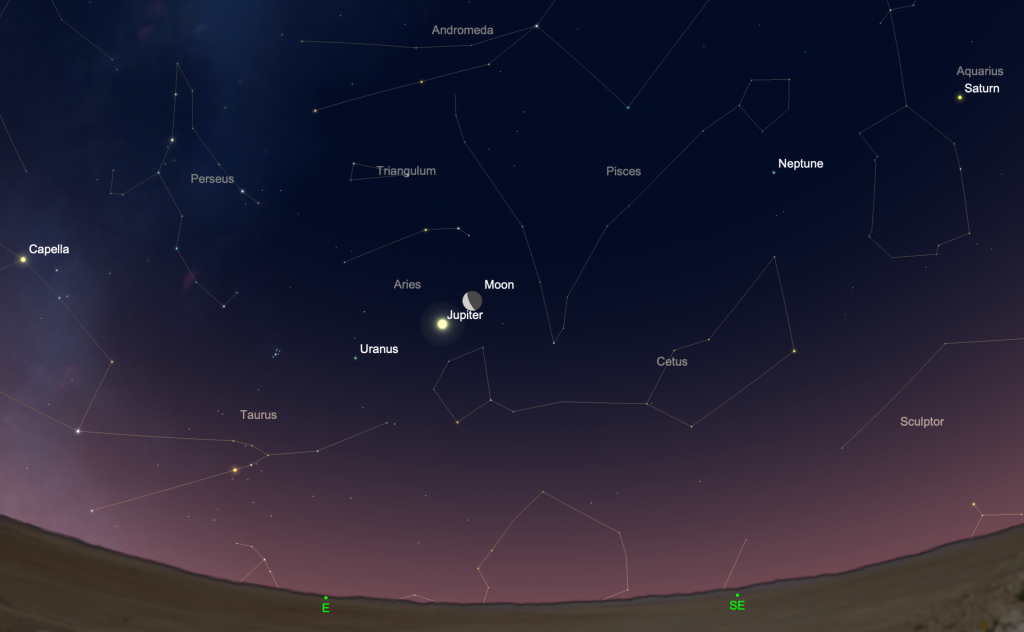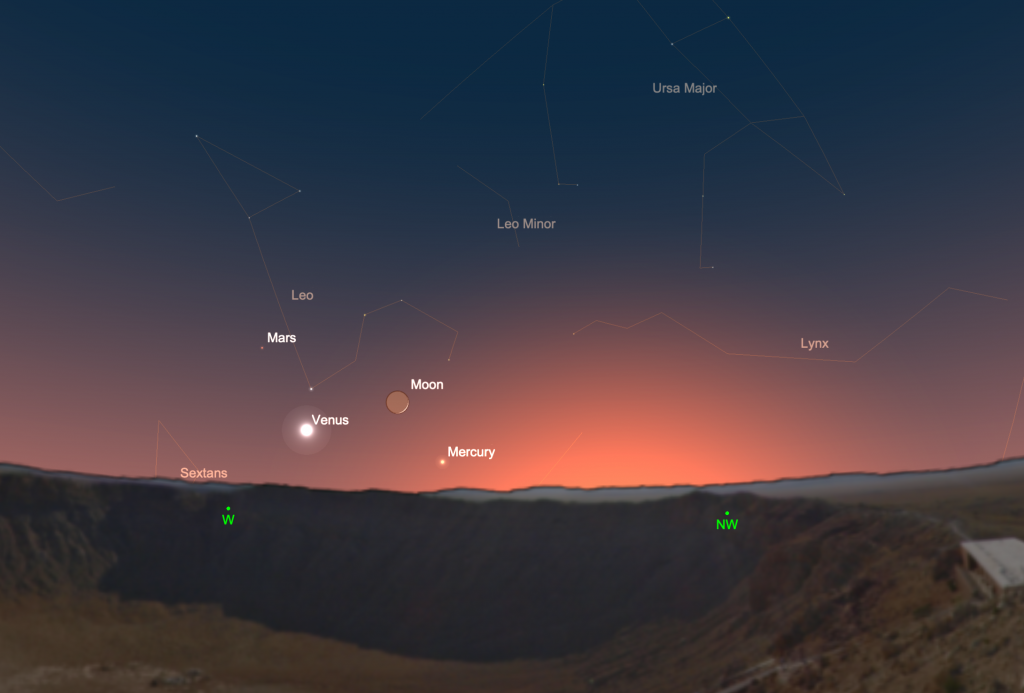
All five bright planets are in play this month, three in the evening sky and two in the eastern morning sky before dawn. ‘Milky Way season’ gets fully underway as the thick band of our galaxy moves into view in the late evening hours. And a modest meteor shower arrives this month, foreshadowing the splendid Perseid meteor shower coming up in August. Here’s what to see in the night sky this month…
1 July 2023. Neptune begins retrograde motion. From now until December, it moves westward just 2.5o in Pisces, the shortest retrograde loop of any planet. On July 8, Neptune lies about two degrees north of the Moon.

2 July. Look for Venus and Mars setting ahead of the constellation Leo in the western sky after sunset. These two planets are on their way to conjunction with the Sun and will fade from view in the coming weeks before reappearing in the morning sky. Venus reaches inferior conjunction next month when it passes between the Sun and Earth. During July, the illuminated disk of Venus narrows to a slender but growing crescent. Venus shines at magnitude -4.5 today and spans about 34”. By mid-month, it grows to a span of 42”, reduces its illuminated extent to 19%, and retains a magnitude of -4.5. Mars, on the other hand, has shrunk to a diameter of just 4.2” and shines at a relatively dim magnitude +1.7.
3 July. Full Moon, 11:39 UTC (the ‘Buck Moon’)
6 July. The Earth reaches aphelion, its furthest point in its orbit from the Sun at a distance of 152,093,251 km.
7 July. Saturn lies about 3o north of the waning gibbous Moon after midnight. The planet now moves in retrograde in Aquarius and reaches its best observing position through the next few months.
9 July. Mars and Regulus lie about one degree apart low over the western horizon after sunset.
10 July. Last Quarter Moon, 01:48 UTC

11 July. Rising Jupiter sits 2o south of a waning crescent Moon in the eastern sky before dawn. The big planet now spans about 34” and shines at magnitude -2.3. The planet rises earlier each night on its way to prime observing position for the rest of the year.
13 July. Look for a slender Moon rising with the Pleiades in the east before sunrise.
15 July. Mercury lies just 0.2o from M44, the Beehive star cluster, low in the western sky after sunset. From now until the end of the month, the little planet makes its best apparition of the year for southern-hemisphere stargazers. Northern observers with a clear view of the western horizon can also spot it.
17 July. New Moon, 18:32 UTC

19 July. The Moon returns to the western evening sky. Look for its thin crescent along with Regulus, Venus, and Mars all bunched within two fist widths in the twilight.
25 July. First Quarter Moon, 22:07 UTC
29 July. Mercury lies just 0.1o east of Regulus, the brightest star in Leo, low in the western sky after sunset.
29-30 July. The Delta Aquarid meteor shower peaks. This annual event favors observers in the southern hemisphere and southerly latitudes in the northern hemisphere, though all observers can see some of these slow-moving meteors. The Delta Aquariids appear to radiate from a point near the star Skat (delta Aquarii) in the constellation Aquarius. The shower peaks around July 28-30, but unlike most meteor showers, the Delta Aquarids lack a sharp maximum so meteors are visible from mid-July through early August. The maximum hourly rate can reach 15-20 meteors in a dark sky.